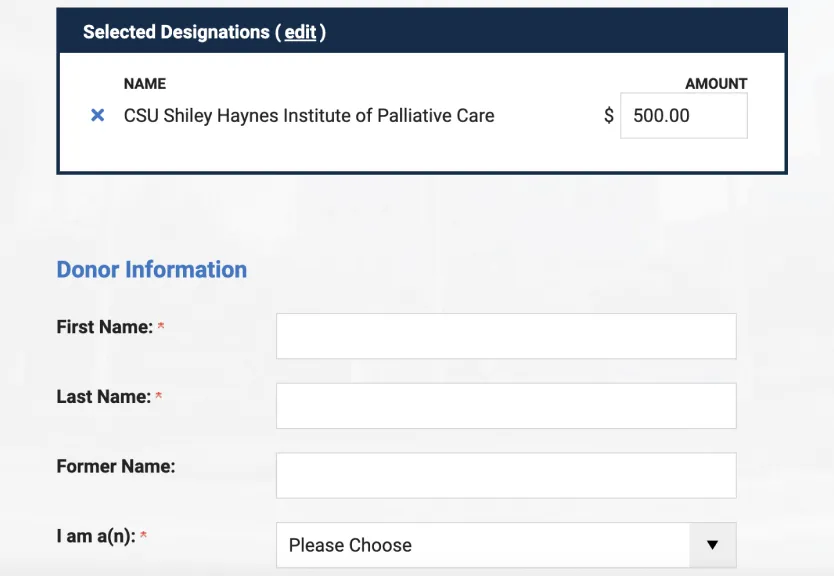POLST Comes of Age, Moves Toward Greater Standardization
In July California Governor Gavin Newsom signed the 2021-22 state budget bill, which included a $10 million appropriation for the California Emergency Medical Services Authority to develop an electronic POLST registry for the state.
POLST—originally called Physician Orders for Life-Sustaining Treatment, now known as Portable Medical Orders—is a medical order that can travel with patients who are seriously ill or medically frail and enable them, in consultation with their doctors, to express treatment preferences for an anticipated medical crisis. This is done with the typically bright pink POLST form, often attached to the patient’s refrigerator with a magnet. The concept was created in Oregon in 1990 and has since spread in various forms and stages of development to nearly every state.
National POLST, created to promote POLST implementation and uniformity across states, has endorsed POLST programs in 24 states. In September 2019, it released a national POLST form with standardized language, which at least seven states have adopted or adapted. Still, there remains a lot of variation in execution nationwide, even in the names used for these state medical orders programs.
“POLST is for when you are frail or seriously ill and are able to have a conversation about your condition and specific treatments with your provider. If you use it in healthy populations, you devalue its credibility,” says Amy Vandenbroucke, JD, executive director of National POLST.
In addition to promoting the national POLST form, the movement’s next step is making the forms easier to access in an emergency. Examples include when the patient’s copy of the form can’t be found, is not accessible in a crisis, doesn’t go with the patient in the ambulance or across health care settings—or even across state lines, where emergency personnel might feel they can’t honor it.
In 2021, the direction for enhancing access to POLST documents is state electronic registries. These registries typically are password-secure but accessible through the Internet. Others limit access only to health providers. Various groups—regional, statewide, private, for-profit companies, health systems and others—have worked on registries for years, sometimes with more emphasis on the submission process than on ease of accessibility in a medical crisis. At least five states have active POLST registries, and others are in the process of establishing or piloting a registry.
First Step in the Process
California implemented POLST in 2008, led by the Coalition for Compassionate Care of California (CCCC), which also sponsored the new statewide registry proposal. “The first step when developing a POLST registry is planning for a process that may take several years,” says Judy Thomas, JD, CCCC’s CEO.
The 2021/22 California budget also includes $750,000 per year starting in 2022 to strengthen the existing “POLST ecosystem” in preparation for the future registry through education of healthcare providers to ensure POLST forms are completed accurately and appropriately.
“We will need to develop technological standards for the registry, which vendors will use. But as we know, healthcare information technology is an extremely fragmented field,” says Thomas. Interoperability with hospital and health system electronic medical records is another important goal.
“You want assurance that the patient’s most recently completed form is the one that comes up in the registry,” she says. Another goal is to improve work flow—making online completion of POLST seamless for the doctor and their patient. Any extra steps decrease the chances that a form expressing the patient’s preferences will be completed.
There are also other technical issues to work out. For example, emergency medical personnel likely have connection to the Internet—and thus electronic POLST registries—while they are in the ambulance. But when they step into a patient’s house, they may lose that link. It’s important that emergency personnel have easy access to POLST instructions so that patients’ treatment wishes can be honored.
In recent years, POLST has become a much better known, almost routine part of the health care system in some states. It’s slowly becoming part of standardized medical education for younger doctors, nurses and other clinicians. It has moved from the early adopters, driven by passionate leaders, to a place where pioneering efforts are no longer required.
But it is still a movement, one with resources and models to build on. The California State University Shiley Haynes Institute for Palliative Care, a pioneer in palliative care education for health professionals, offers the online course “Working with POLST”. Information and resources on California’s POLST program are available online from CCCC, and National POLST offers a technology guide and other resources.
“Because of its success, POLST is well known, and viewed as beneficial. But there still is a lot of misunderstanding,” Thomas says.
“Our goal is to make POLST as easy as possible for patients and providers to use,” Vandenbroucke adds. If a form is substantially the same as in another state where the patient has traveled, the POLST form from the first state may still be honored, but that’s not a sure thing. “Standardization would also aid in quality research, which is hard to do beyond single states because the forms used are so different.”




